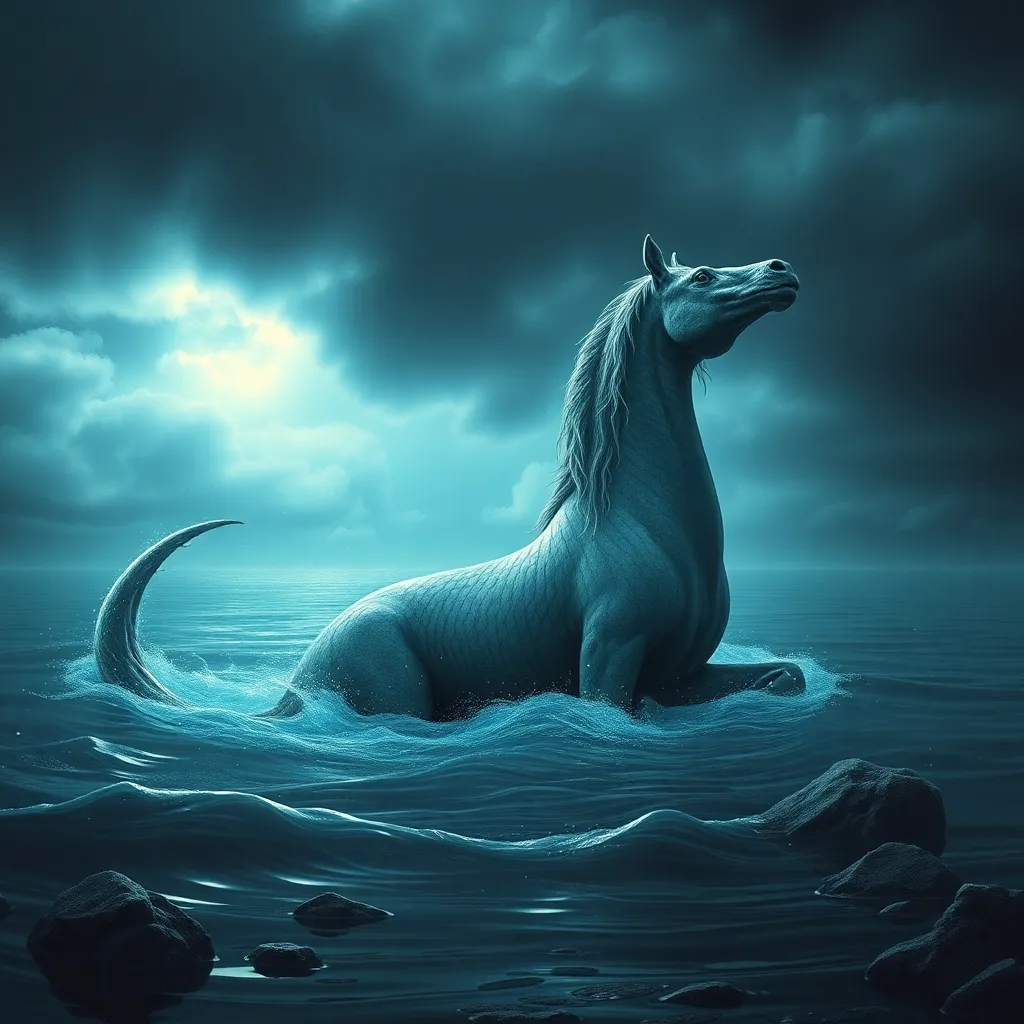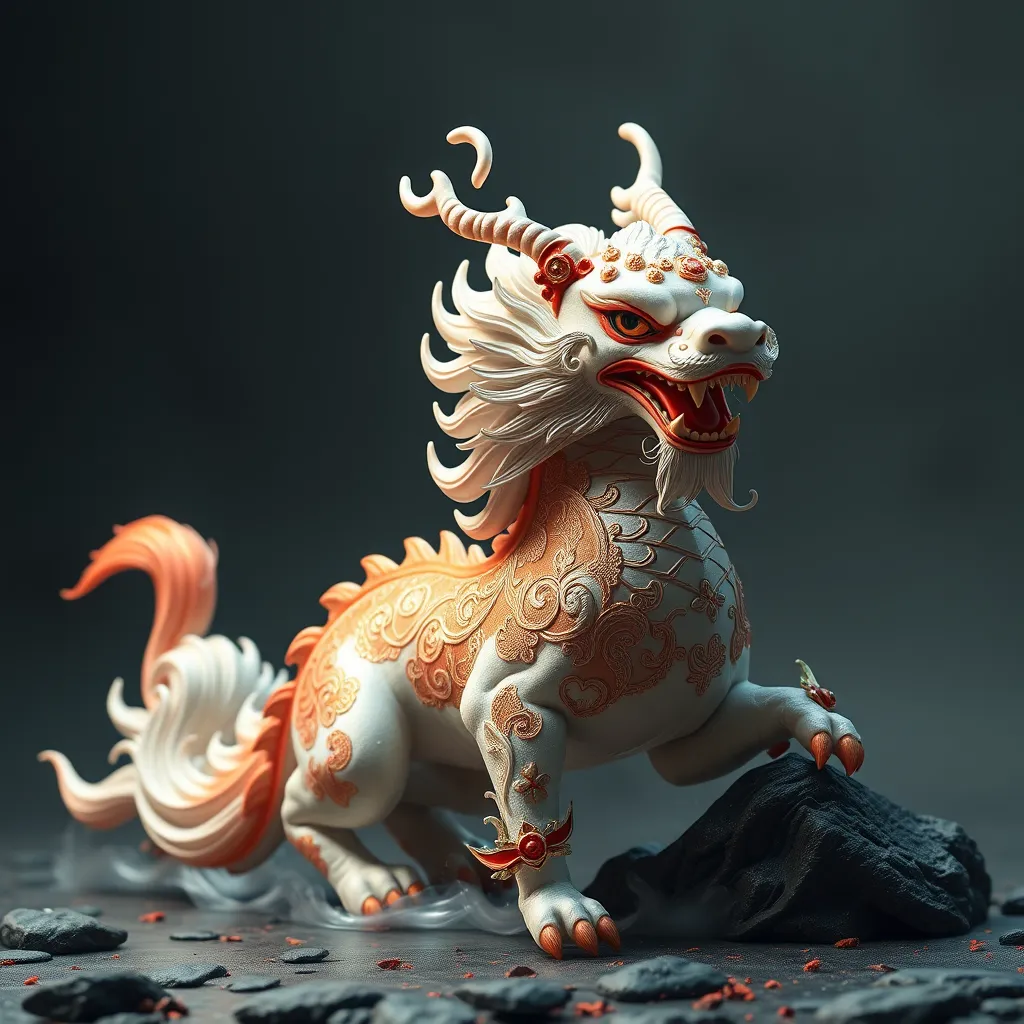The Kelpie in Literature: From Traditional Folktales to Modern Fantasy Novels
I. Introduction
The Kelpie is a fascinating creature rooted deeply in Scottish folklore, often depicted as a shape-shifting water spirit that lures unwary travelers to watery graves. Its significance extends beyond mere tales of caution; it symbolizes the unpredictable nature of water and the dangers that lurk within. This article explores the Kelpie’s evolution in literature, tracing its journey from traditional folktales to its modern interpretations in fantasy novels.
II. Origins of the Kelpie in Scottish Folktales
A. Historical context and cultural significance
The Kelpie’s origins are steeped in Scotland’s rich cultural tapestry, with tales of this mythical horse-like creature dating back centuries. Traditionally, Kelpies were believed to inhabit rivers and lochs, embodying the dual nature of water—both beautiful and treacherous. The stories often served as cautionary tales, warning communities about the perils of venturing too close to dangerous waters.
B. Key characteristics and traits of the Kelpie in traditional stories
Kelpies are often described as stunning horses with sleek, dark coats. However, their true nature is revealed when they attempt to lure individuals closer. Key characteristics include:
- Shape-shifting abilities, transforming from horse to human.
- A haunting beauty that captivates those who encounter them.
- A connection to water, often residing in or near rivers and lochs.
C. Common themes and moral lessons in folktales
Traditional Kelpie stories convey various themes, including:
- The dangers of temptation and the consequences of succumbing to it.
- The importance of heeding warnings and respecting nature.
- The duality of beauty and danger, illustrating that not everything is as it seems.
III. The Kelpie’s Role in Romantic Literature
A. The Kelpie in 19th-century poetry and prose
During the Romantic era, the portrayal of the Kelpie underwent significant transformation. Poets and writers began to explore deeper emotional landscapes, intertwining the Kelpie’s haunting beauty with themes of longing and melancholy.
B. Influence of the Romantic movement on the portrayal of the Kelpie
The Romantic movement emphasized emotion, nature, and the supernatural, allowing the Kelpie to emerge as a more complex character. Writers such as Sir Walter Scott and John Keats incorporated Kelpies into their works, highlighting their allure and the tragic consequences of encounters with these creatures.
C. Notable literary works featuring the Kelpie
Some notable works include:
- The Lady of the Lake by Sir Walter Scott, where the Kelpie symbolizes both beauty and danger.
- Poems by John Keats that reflect on the ethereal qualities of the Kelpie.
IV. The Kelpie in Children’s Literature
A. Adaptations of Kelpie stories for younger audiences
As literature evolved, so did the portrayal of the Kelpie in children’s stories. These adaptations often softened the more sinister aspects of the creature, focusing instead on adventure and moral lessons.
B. Moral lessons and educational themes in children’s tales
Children’s tales featuring Kelpies often include teachable moments, such as:
- Understanding the consequences of curiosity.
- Learning to recognize and resist temptation.
- Valuing friendship and bravery in the face of danger.
C. Popular children’s books featuring the Kelpie
Some popular children’s books include:
- The Kelpie’s Curse by Rachel Bright, a story that emphasizes friendship.
- The Water Horse by Dick King-Smith, which features a Kelpie-like creature.
V. Modern Fantasy Novels and the Kelpie
A. Evolution of the Kelpie’s character in contemporary fantasy
In modern fantasy literature, the Kelpie has evolved into a more nuanced character, often depicted with a blend of mystery and depth. Authors now explore themes of identity, transformation, and the relationship between humans and nature.
B. Examples of modern authors who incorporate the Kelpie
Several contemporary authors have woven Kelpies into their narratives, including:
- Holly Black, known for her works involving faeries and other mythical creatures.
- Sarah J. Maas, whose series often features water-based magic and beings.
C. Themes of identity, transformation, and nature in modern interpretations
Modern interpretations of the Kelpie often delve into themes such as:
- Exploring one’s true nature and identity.
- The transformation of characters as they navigate challenges.
- The interconnectedness of humans and the natural world.
VI. Comparative Analysis: Traditional vs. Modern Portrayals
A. Changes in the Kelpie’s characteristics over time
While traditional Kelpies were primarily seen as malevolent beings, modern portrayals recognize the complexity of their character, allowing for both darkness and light.
B. The shift from fear and danger to complexity and nuance
This evolution reflects broader societal changes, where characters are no longer strictly good or evil but rather multifaceted with relatable motivations.
C. Impact on reader perception and cultural relevance
The modern portrayal of Kelpies resonates with readers, encouraging a deeper understanding of nature and its mysteries, as well as a reflection on our own identities.
VII. The Kelpie in Popular Culture
A. Influence of literature on other media (film, games, etc.)
The Kelpie’s literary journey has inspired various forms of media, including:
- Films that depict Kelpies as both enchanting and dangerous.
- Video games featuring Kelpies as mythical creatures players can encounter.
B. The Kelpie’s representation in visual arts and performances
Artists and performers have also drawn inspiration from the Kelpie, creating:
- Paintings that capture the ethereal beauty of Kelpies.
- Theatrical performances that explore the Kelpie’s myths and legends.
C. The Kelpie as a symbol in modern storytelling
In contemporary narratives, the Kelpie often symbolizes:
- The allure and danger of the unknown.
- The complexities of nature and its warnings.
VIII. Conclusion
A. Summary of the Kelpie’s literary journey
The Kelpie’s journey through literature reflects significant cultural shifts. From a malevolent water spirit in Scottish folklore to a more nuanced character in modern fantasy, the Kelpie embodies the complexities of human experience.
B. The ongoing relevance of the Kelpie in contemporary literature
As literature continues to evolve, the Kelpie remains a potent symbol, reminding us of the beauty and danger that coexist in nature.
C. Final thoughts on the future of the Kelpie in storytelling
As storytellers explore new narratives, the Kelpie will undoubtedly continue to adapt, offering fresh perspectives on identity, nature, and the ever-present allure of the unknown.




